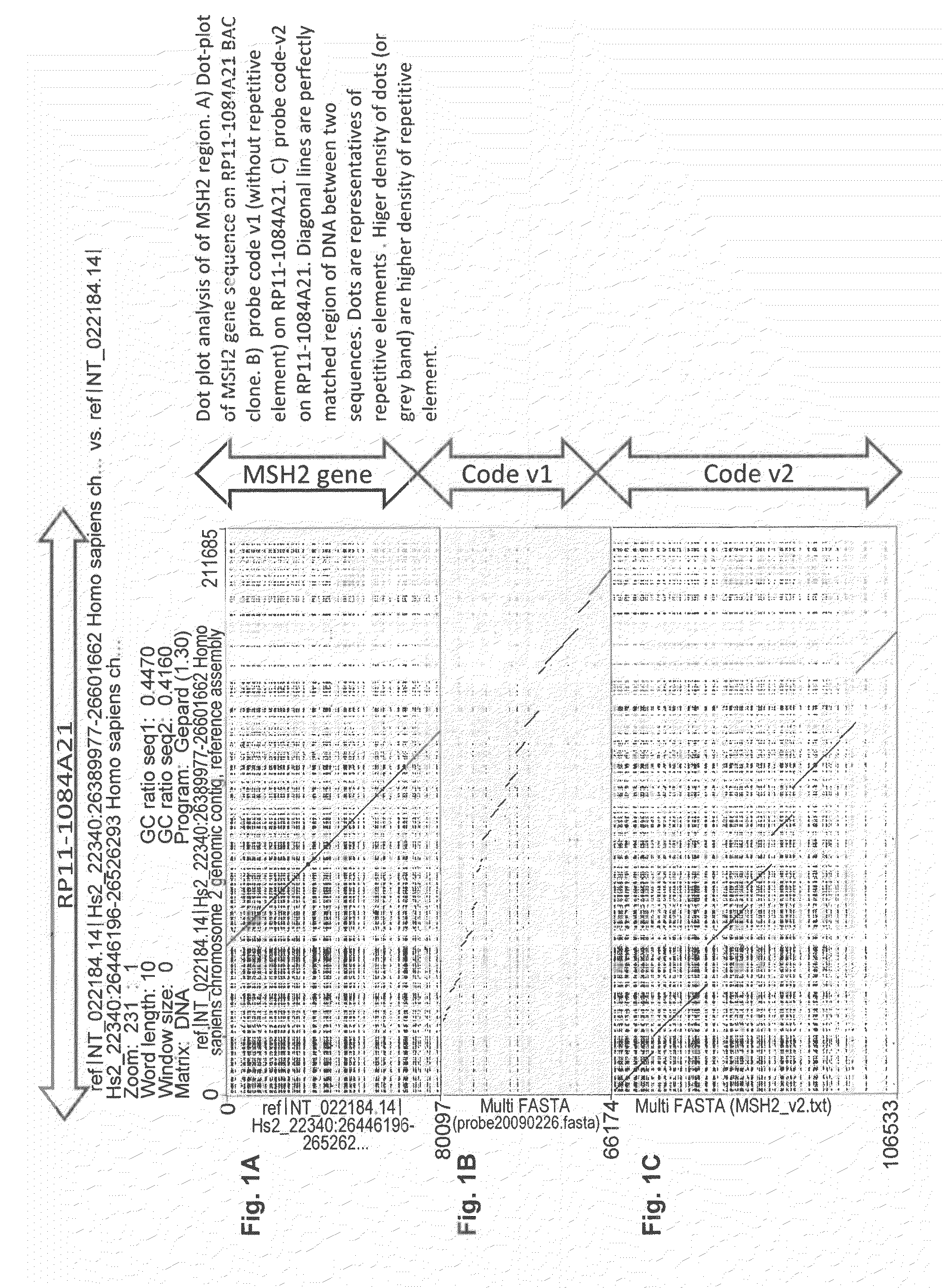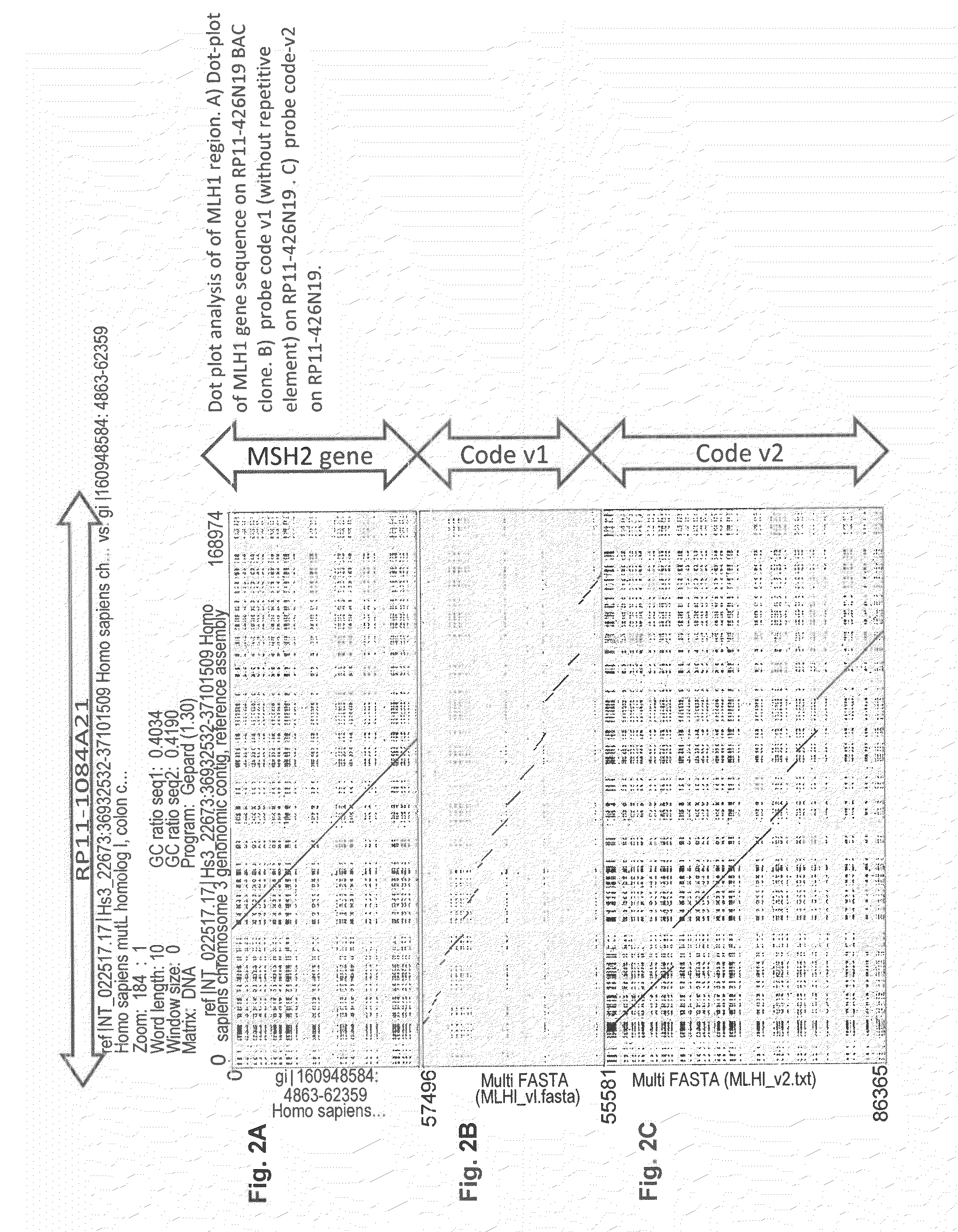Method for identifying or detecting genomic rearrangements in a biological sample
a biological sample and genomic technology, applied in the field of genomic rearrangement identification or detecting in biological samples, can solve the problems of insufficient reliability of diagnostic use, mainly limited by resolution, and the current use of probe designs that fail to allow cost- and time-efficient high resolution analysis of rearrangements, and achieve high precision/high-resolution detection. , the effect of increasing the risk of occurren
- Summary
- Abstract
- Description
- Claims
- Application Information
AI Technical Summary
Benefits of technology
Problems solved by technology
Method used
Image
Examples
examples
[0176]Application to HNPCC—Materials and Method
[0177]Probe Design v1
[0178]Each probe (probe means continuous hybridization signal, can consist of multiple cloned DNA fragments, e.g., probe 1 of MSH2-v2 covers a 15 kb stretch and consists of five cloned DNA fragments of 3 kb. Since gap or overlap of each junction of these five fragments are smaller than resolution (<50 bp), they are considered and indeed look like continuous single probe of 15 kb) on a region of gene sequence itself has a length between 3-6 kb. In case of larger rearrangement than probe or gap size, obvious change of color pattern of designed probe will be observed. As well as large rearrangement in probe region, such rearrangement is also detectable in gap region, meaning any rearrangement larger than 1 kb at any position in the target genes are detectable. This is a uniqueness of cartography method with high resolution probe hybridization. Other techniques (MLPA, aCGH) can detect only such rearrangement involving p...
PUM
| Property | Measurement | Unit |
|---|---|---|
| volume | aaaaa | aaaaa |
| length | aaaaa | aaaaa |
| fluorescent | aaaaa | aaaaa |
Abstract
Description
Claims
Application Information
 Login to View More
Login to View More - Generate Ideas
- Intellectual Property
- Life Sciences
- Materials
- Tech Scout
- Unparalleled Data Quality
- Higher Quality Content
- 60% Fewer Hallucinations
Browse by: Latest US Patents, China's latest patents, Technical Efficacy Thesaurus, Application Domain, Technology Topic, Popular Technical Reports.
© 2025 PatSnap. All rights reserved.Legal|Privacy policy|Modern Slavery Act Transparency Statement|Sitemap|About US| Contact US: help@patsnap.com



